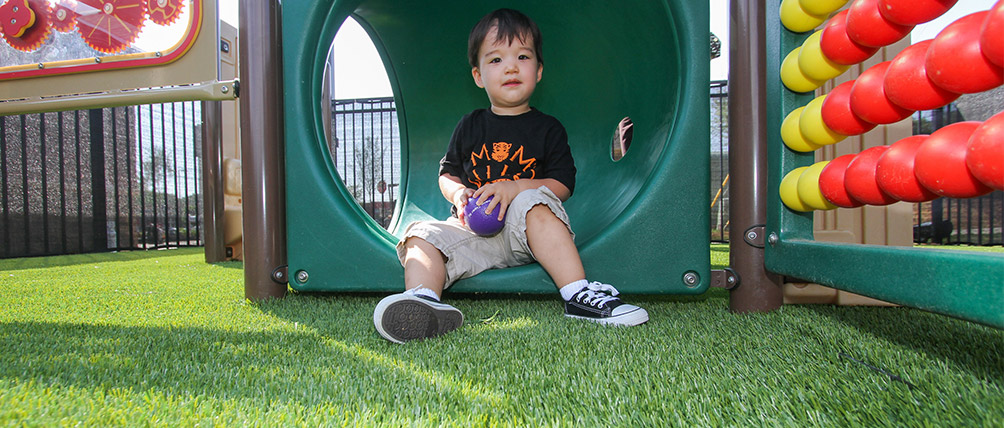Equipment Area
With over 200,000 children going to the emergency room annually for playground-related injuries, the surfacing under equipment is critical for cushioning falls and preventing traumatic injuries. Learn about a few of the factors to consider when deciding which surfacing material would be best for your playground.
Maintenance
Before choosing a surfacing material, one should consider the amount of ongoing maintenance that will be required. Maintenance is especially when using loose-fill materials like mulch since it is frequently displaced from high-traffic areas and must be kept at a consistent depth to provide adequate fall protection. Loose-fill materials must also be inspected for foreign objects that can be hidden below the surface. In contrast, unitary surfacing materials offer more consistent protection as they cannot be displaced, they don’t compact and they are easy to keep clean.

Weather Resistance
Weather resistance is another important aspect of playground surfacing as it can play a part in the frequency of injuries. Freezing temperatures and precipitation primarily affect loose-fill materials as they compact and lose their impact attenuation abilities. Unitary surfacing materials generally offer better protection during cold and wet weather, although they can still be affected if proper drainage is not installed.

Affordability
While it would be ideal if the cost of surfacing did not factor into the safety of children, budgets are a reality and must be considered when choosing playground surfacing. In general, loose-fill materials are more affordable and easier to install than unitary surfacing options, but they also need to be maintained regularly and replaced occasionally to provide consistent fall protection. Over the lifetime of the playground, these maintenance and replacement costs can become very significant.

Equipment Height
Playground equipment comes in a wide variety of heights and there are guidelines in place to help specify how much padding or depth a surface needs to provide the proper impact attenuation.


